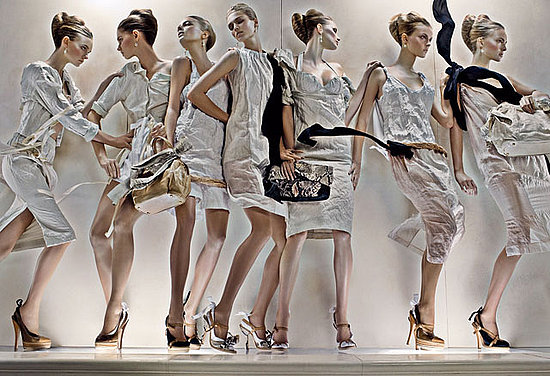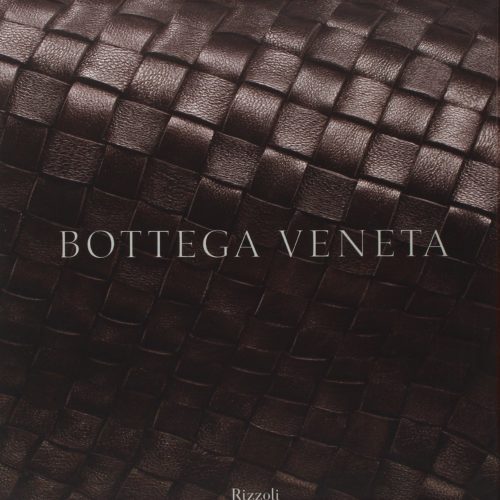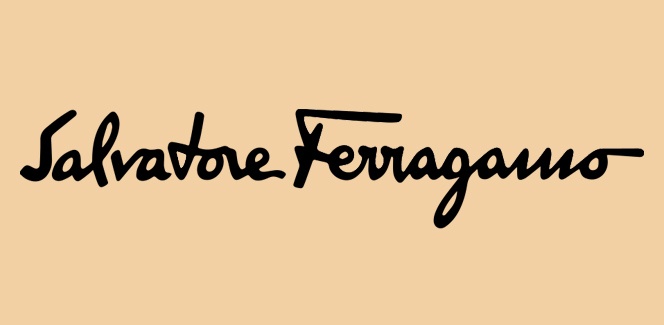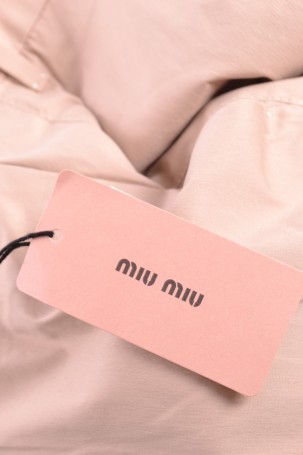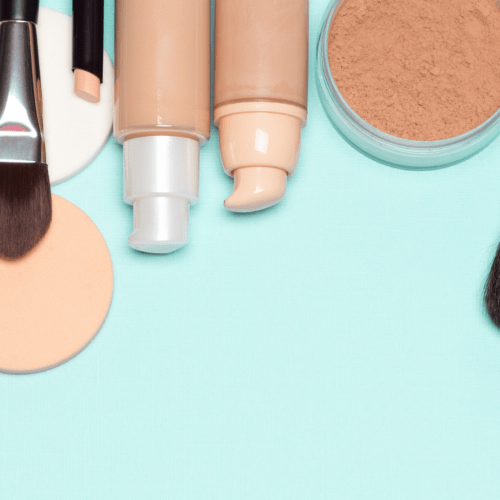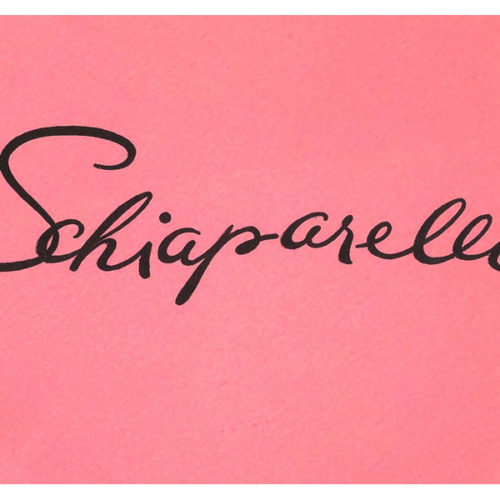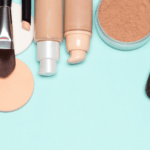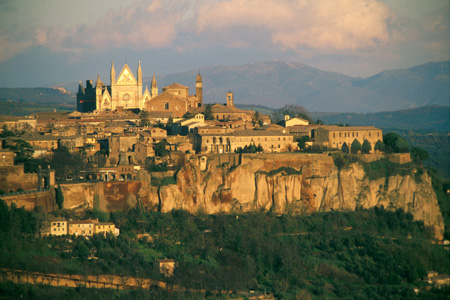History of Makeup and Accessories
Shoes
Unstable like the mood of time and transitional as vanity, the search for beauty is old as man (and obviously woman). The knowledge of cosmetics and pharmacology in old Greece and oriental civilizations was so deep to reach unchanged in the 17th century. The Romans, even though originally characterized by a certain simplicity of their local costumes, easily got seduced by their care of the body and …”to look good” (let’s think about Marco Porcio Catone who regretted, during his senate speeches, the rigid application of the “Mos Maiorum” in the Pre Augustan era”). Like selecting the right size for a comfortable fit and stylish look, understanding historical beauty practices requires attention to detail and context.
The “Naturalis Historia” by Plinio and the writings by Discoride, who were contemporaries, he was the first one to apply botany to medicine, fascinating are the information and the thorough news fonts, prescriptions, and advice in the new archaeological findings which also Pompeii it’s particularly generous in giving us. (PHOTO: Painting in the “Farnesina House” showing a girl pouring perfume into an ampoule – Ist century AD – National Museum – ROME
The cosmetics were kept in a beauty case made of valuable wood (See the picture on the side – reliquary containing cosmetics objects – Arch. Museum of Naples) which contained tiny liquid receptacles made of blown glass, glass paste, or molded with fragrant amber, used mostly to contain lipsticks and eyeshadow. Specifically, in order to keep the perfume replacements, dove-shaped containers were used. When filled they were sealed with flame and in order to open them the tail or the beak had to be broken. “Matrons” daily makeup started with a base, prepared mainly with “Biacca” which was mainly done with Lead Carbonate sold in tablets which was to be melted in honey or other greasy substances.
Ampoules containing cosmetics – Archaeological Museum: TURIN
Considering the ingredient’s quality, that “Biacca” is highly toxic, a bad detail even known to the old Roman ladies, it’s understandable to have serious doubts about the results of such esthetical remedies and share the opinions of Latin poets and dramatists who didn’t skimp on “poisonousness” and sarcastic comments on the expensive cosmetics used by ladies.
“Curl, makeup, cosmetics, greasepaint, and teeth you bought. With the same money, you could have got a new face”. This was the comment Lucilio said since the II century BC, not actually that very gallantly, in his “Satire” (book XVI).
“Marziale” is not less mordacious: “Everywhere you go, you let know that “Cosmo” (Cosmo was the best-known perfume maker contemporary to Marziale) is moving his shop around and that perfumed essences are flowing out a stirred flacon. I don’t like, Gellia, that you enjoy this alien foolishness. You know that my dog could have this same perfume!!” (Epigram, 3,559) Ovidio doesn’t seem to be more mild even if he is generous with advice.
“May your lover never find you with cream’s jars. The art that makes you beautiful will have to remain a secret. Who will not be disgusted to see your face all smeared, when it heavily drips between your warm breasts? And what smell the “esipo” (lanolin) sends out, like crude fleece squeezed from a fetid filthy goat, even if it comes from Athens!! I don’t approve when you, in public places, apply mixtures of female deer’s marrow and when, in front of everybody, clean your teeth. These cures make you beautiful but are ugly to see while you perform them. Often what we like, is liked after it’s done, it displeases us while we do it. (Ars amatoria, 209 – 218).
Not at all discouraged from these blasphemous comments the Roman women kept on going, highlighting their eyebrows with powdered “Stibium” (antimony) or “Fulgio” (lampblack) and coloring their eyelids with green eyeshadow obtained from malachite and blue eyeshadow from azurite. From the mulberry, “Fuco” (a reddish color algae), animal extract, vegetables, and mineral substances (above all cinnabar, red plaster, and miniate, even this last substance is highly toxic) lipsticks were made. Even teeth were an object of care, thanks to the toothpaste made with pumice powder, “chio putty” (supposedly to be a metal powder), soda, and sodium bicarbonate.
For bad breath “miraculous” pills were on the market: ” In order to subdue the heavy scents from the day before heavy drinking and singing the “Fescennia” (old Roman licentious songs probably sang after heavy drinking), swallowed a large number of pills manufactured by “Cosmo” (the perfume maker) … furthermore, since the pestiferous breath is mixed with the pills, it will smell even worse and that a double amount of bad breath will spread out even further away!” (Marziale).
The art of preparing cosmetics was given to the “Cosmetae” (female slaves exclusively trained for that particular purpose) who, time by time and in that particular moment, dissolved various ingredients with their saliva in small containers, helped by a certain series of spatulas, small spoons and ring-shaped mixers made of wood, bone, ivory, amber glass or metal.
Small Cups sticks and spatulas for makeup,
I – VI century AC.
Moulded blown amphora shaped as a grape cluster,
II – III century AC.
Beauty masks to prevent skin aging or cure imperfections (freckles, removing skin flakes, skin stains, etc.) were also very common. They could be made on a vegetarian base such as lentils, honey, barley, lupine, fennel added with rose and myrrh essence or could be obtained from organic mixtures (frail deer horns, excrements of kingfisher, mouse and crocodile, placenta, marrow, genitalia, bile, calves urine, cows, bulls, jackass) mixed with oil, goose grease, basil juice or oregano seeds, hawthorn, sulphur, honey or vinegar.
Particular caution should have been taken in applying these cosmetics. The masks obtained with jackass urine, for instance, seemed to be efficient only if utilized at the moment that the Dog constellation was rising. Small jars used for cosmetics, from the Homo Faber display – Archaeological Museum – Naples
(March – July 1999)
Perfumes
Perfumes deserve a particular mention. We find splendid evidence of their entire production process, shown by the chubby cupids in the “Vettii” house in Pompeii.
Above: the three sequences of the decoration showing the perfume maker cupids – “Vettii” House – Ist century – Pompeii.
The distillation process, introduced by the Arabs in the IX century AD, was not yet known. The essences were obtained by means of squeezing and macerating. The oily base (technically called “Onfacio”) was made up of green olives or sour grape juice (Agresto) in which perfumed substances were macerating along with dye. Some perfume names are known to us.
The “Rhodium” was the essence derived from the rose petals, mainly produced in Palestrina (town in the Lazio region), Capua and Naples; “Illirium” and “Susinum” were obtained from various kinds of lilies from Pompeii, “Mirtum – laurum” from myrtle and laurel, “Melinon” from quince apples, “Iasminum” from jasmine. From Egypt came “Metopuim”, in which ingredients also appeared the very expensive “Judean balsam”.
During the imperial time, Alexandria was the main hub concerning spices and aromatic herbs which were then shipped to Rome and, above all, to Preneste, Naples, and Capua, where the top of spices manufacturers could be found along with the most skillful perfume counterfeiters (!!!!) of those times.
The essences had prohibitive prices starting from the I century AD when a pound of perfume was paid even more than 400 dinars. A scandal-mongering waste, according to Plinio, since such riches were wasted “pro fumo” (like smoke), without any other result than to please others, since “chi è profumato non si accorge di esserlo” (he who is scented doesn’t realize he is).
Literally following Plinio’s and Dioscoride’s instructions it was possible to recreate ancient fragrances, discovering that our old vain ancestors were inclined toward intense and sweetish fragrances, maybe more appropriate to cover the sewers and stables smells, in addition to the bitter blood odor of the animals killed in the amphitheaters. Perfumes were not only for personal use.
It was a widespread custom, as a matter of fact, to even scent home environments. A sound example of regality and luxury was Nero’s “Domus Aurea” in which “the banquet hall ceiling was made of moving and pierced raw plugs so that flowers and perfumes could be spread on guests”.
Octagonal room – Domus Aurea
Roma
These practices had, however, some disadvantages. It seems that, during a banquet given by Nero, one of his unfortunate guests died asphyxiated by the enormous outflows of scented water, made out of rose petals, when it dropped on his invitees. Emperor Eliogabalo, instead, had arranged for perfumed water rain and violets to drop from the ceiling on his guest, but also the vases in which the above-mentioned paraphernalia was contained, dropped on their heads.
It seems that the embarrassing incident made Marziale laugh like crazy: “An excellent perfume you gave your table companions, that is true, but no food. It’s funny to be perfumed and hungry. Empty stomach and oiled, Fabullo, are the dead.” (epigram, 3,12). Still, according to Plutarco, Caesar ate some asparagus, flavored by mistake, with an aromatic ointment instead of a vulgar, but more healthy, olive oil.
The collateral effects that Caesar suffered from his incautious meal are not known to us but his relationship with the perfumes, and generally speaking, with the feminine art of cosmetics known in the Greek term “kallopizestai” (art of bragging), should have been rather suffered.
It’s known that the divine Cleopatra was an expert connoisseur of the old cosmetics arts, (she wrote a whole treaty about the art of makeup), so much so that to the farm with an “officina crematoria” (aromatic workshop) annex was found on the Dead Sea shores in the “Idumea” region, on a lake shore, 30 Km south of the “En Ghedi” oasis was given the name of “Cleopatra’s cosmetic laboratory”.
The area, placed 400 meters below sea level, sits on one of the deepest depressions in the world. Because of heavy water evaporation, the salt concentration was at a very high level. The workshop, which belonged to Erode the Great, was composed of nine environments or rooms. One was used as a waiting room for clients and furnished with stone benches. Very interesting, because of the exceptional state of preservation on the sight findings, of two pools used for perfume maceration besides other various cosmetic and makeup remains.
Roman – Syrian phial made for essences
I – II century AD
Balsam container from Terni I century BC – I century AD model with polychrome stripes and gold.
In the workshop was also produced what Plinio points out as “asphalite”, mud also known in Judea as black tar, extracted from petroleum and used to cure psoriasis, besides the famous Dead Sea salt which was used as medication or as a cosmetic.
Hair, Wigs, Dyes
We cannot speak about beauty, without mentioning hair treatment, a regular commitment to the people who still have some, and the affliction to the ones who cannot show them off anymore. The baldness problem was a particularly touchy one, by men above all, who often tried to find a remedy by using “Laudanum” (solution containing opium) and myrrh.
Plinio sends us a good recipe to grow hair back, suggesting to “scrub only the section where you lost your hair with soda, then apply a brew of wine, saffron, pepper, vinegar, “laserpizio”, and mouse feces” (Naturalis historia, XXII, 104). In case Plinio’s advice didn’t work, Romans could make up by smearing by themselves, on their bald heads, with some colored ointments or using a variety of wigs and hair pieces made with techniques which most likely came from Egypt and however similar to the ones presently used.
Even Caio Julio Caesar was tortured by his baldness, so much that Svetonio tells about him (Caesaris Vita 1,7,5): ” never consoled himself of being baled… in order to hide his baldness he combed, the few hair he had left, toward the front. Among all the honors that were given to him by the Roman people and the Senate, he only chose to always wear the laurel crown leaving all the other honors behind (of course to hide his baldness).
Hairstyle belongs to the Traiano period. In hair care the Roman matrons relied, instead, on the housemaids called “ornatrix”, forced to daily cope between scaffoldings made of curls, braids, ribbons, and pins in a noneasy job to turn an ugly matron (or whoever) into a beautiful woman, threatened by the anger of the pretentious and nasty mistresses. In the centuries, fashions brought Roman women to wear various types of hairstyles.
Starting from the style in which hair was simply combed back adhering to the back of the neck or divided in puffy curls (so-called “melon” hairstyle). At the beginning of the Imperial Age, they switched to very complicated “head high” hairstyles redundant
with curls obtained by using a hot iron, the “calamistrum”, heated on cinders by the “cinerarii” slaves who worked along with the above-mentioned “ornatrix”. From the II century AD, Roman women started to decorate their hair with ribbons, diadems, and pins made of gold, silver, and ivory, gracefully finished and empty inside, just enough to contain poison… just in case.
Sharp and slender, besides being a jewel they could also be used as a lethal weapon for defense or offense. It is said that Fulvia, wife of Marcus Antonio, has raged Cicero’s body with her hairpin, piercing his tongue many times in order to punish him because it was “too piercing”. Wigs, were also very elaborate, especially during the “Imperial Era”, and were made with real human hair imported from India, concerning the blond ones, from the “barbarian” women from Northern Europe.
In addition to allowing Roman matrons to be always in fashion, wigs also enabled them to repair damages caused by “calamistrum” and dyeing, these were also used regularly as a habit or to hide white hair. Black hair was strengthened with minerals derived from black antimony mixed with animal fat, absinthe’s ash mixed with rose oil or cypress leaves brewed and saturated in vinegar; “Titian” red hair was obtained by pulverizing leaves belonging to the “Lawsonia inermis”, better known in our days as henna; to make hair blond, instead, was used a potion of Gallic origin made of goat’s fat and beech’s ash.
More “Casereccio” (homemade) was the remedy Plinio suggested for white hair. After thoroughly shaving the head it was necessary to, staying strictly in the shade, smear the head with a crow’s egg previously beaten in a copper vase. It seems like the only side effect, because of using Crow’s “offshoot “, having an exceptional darkening power, was that teeth were dyed as well. In order to avoid finding oneself with teeth apparently devastated by caries, Plinio suggested keeping oil in the mouth until the head dried off.
More eccentric colors, such as deep blue and above all “Carrot” red, were used by prostitutes. Not by chance that the prostitutes were also commonly called “Rufae” (reds). Not even men were immune to using dyes for hair. At Commodo’s times was particularly in fashion a blond color, called “alla germana” (German style). Even the emperor used to sprinkle his head with gold powder.
Pompeii – Inside of the “Lupanare”. I century AD
Other Feminine “tricks”
Of course, such, constant commitment, from both females and males, in exhibiting their sharp weapons of seduction, could not lead but to obvious consequences.
Even if Roman laws clearly indicated when a love relationship was legal and when, instead, had to be prohibited and punished (religious and moral censorship spread above all with the coming of the Christian religion), in the first decades of the Empire, were still far away. Beautiful evidence that shows the relationship between common people and sex came to us through Pompeii’s erotic frescos and, with them, what, consequently, Roman women, after having had to makeup and perfume, would do (?) to avoid getting pregnant.
In the book by Eva Cantarella “Pompeii’s many love’s faces” can be read as:
“Contraceptives, at the time, were not very effective. Doctors, this is true, suggested remedies such as the “pessari”, wool tampons soaked in vinegar and placed in the genitalia. Sorano, in this case, points out in his “Ginecologia” the month’s period in which it was appropriate to apply the “pessario” and how the tampon avoided procreation: inserted hours before intercourse, and removed before this, if soaked in an astringent substance, prevented sperm to go up. Leave aside the substances here used, vinegar or figs dry pulp, their efficiency was uncertain. To the same extent not reliable, apparently, were remedies taken orally, always indicated by Sorano or from naturalists, such as Plinio, who suggested to use of substances such as “Asperon” (substance never identified) or fern’s root.
There were then popular remedies; talismans of various kinds and species, going from a cat’s liver enclosed in a tube and tied to the left foot to a lioness matrix tied to any part of the body. Is useless to mention how efficient they were…
“Emancipated women didn’t want kids, or at least didn’t want to be eternally pregnant. Hence here they are, the contemporaries tell, making themselves bounce around on carts, also utilizing massages and cataplasms: as long as these tales are true, once again employing unreliable methods. And when, as it was inevitable, these methods didn’t work, if the child was not really wanted, or if it was unacceptable, abortion became an obliged choice: even if, given the systems used at the time, unpleasant to say the least, dangerous and often deadly”.
Erotic fresco – Pompeii I century.
Recipes from the Past
Metrodora, a Byzantine obstetrician living probably between the V and the VI century AD, has left us a vast treaty on gynecology and vegetal pharmacopeia, which arrived to us thanks to the work of a Greek scribe who was at Lorenzo il Magnifico’s service.
Here is an extract of his “prescriptions”.
Toning Tonic for Breasts
Take a “psillio” (plantain) when the moon is descending and apply it to the breasts.
Toning Mascara for Breasts
Place 2 gram (eight part of an ounce) of alum on some dust and 2 grams of sour castor oil plant; grind and mix with red sour wine until the mix becomes dense as wax; spread around the breasts sprinkling with white soil from “Samo” and “Cimolio” or “Cerussa” (ceruse).
Aphrodisiac Beverage
2 scruples (1/3 of a dramme) of “Ruca” (rucola, a kind of lettuce) seed, 1 scruple of pepper, saturate with wine and drink.
Virility Pill
4 scruples of male incense, 5 scruples of pepper, 1 scruple of eatable ginger, 4 scruples of “Euforbia” (euphorbia) lattice. Mix with clay liquorice and grinded bread and make 1dramme pills.
Ointment to Provoke Erection
Pepper, euphorbia, ruca’s seed, satirio: 6 scruples, laurel balsam juice: 4 dramme, smear on the hips, on the womb and thighs.
Wardrobe – Beauty Accessories
Garments
Romans, since most ancient times, mainly used two types of garments: the tunic and the toga. The tunic was a knee-long robe with short wide sleeves, it could be made of various materials and usually tightened at the waist with a “cingulum” (belt)
The toga, instead, was a semi-oval ankle-long outfit. It was worn wrapped in different ways around the body always leaving the right hand free for use (which was used to gesture in ceremonies,). Women instead wore a tunic variant called “Stola” (stole) and a “Palla” (kind of toga) on the stole. Besides these garments, there were also the “Pallia” (cloaks), various types of hats like the “Cucullus” (a kind of cap), and the “Petasus” (man’s hat shaped like half an egg). Women wore either the “Mitra” (mitre) or the “Ricinum” (veil). The most important footwear were the “Solea” (typical Roman sandal) and the “Calceum” (a half-leg tall booth tightened with laces).
Perfumes and Skin Emulsions
Roman women always had a certain care for their skin and their beauty. In ancient times the most important thing for a woman was to be clean and tidy, but evolution changed tastes. In the late Republican Era women besides being clean had to be also tidy and, above all, attractive. In order to be that they used creams, soaps and oils produced from plants and mixtures containing animal fats. Hair and clothes were perfumed and ointments, to make skin softer and more elastic, were used.
Being austere since Rome’s birth, hairstyles became more elaborate and fanciful so the rich had a hairdresser slave.
Obviously, some cure were not available to everybody, for instance, bathing in the milk, which was thought to make skin softer and brighter. Less rich women who couldn’t afford that could, however, buy creams or balsams which were commonly sold in all of Rome, or else go to the baths. Furthermore, to underline their beauty, cosmetic bases and powder, made of various colors extracted from minerals, were used.
And men? They generally didn’t take care too much about their skin with oils or emulsions but took much care of their beards which were usually completely shaved by a barber. They also used perfumes, especially during ceremonies. Is interesting to know that also men used to depilate themselves even if it was considered feminine.
However, this practice was so common that even the baths had a slave assigned exclusively to male depilating.
Advice Given by the Poet Ovidio Regarding:
Hairstyles
May each woman choose, in front of the mirror, the hairstyle that is mostly suitable for her. A long face needs hair to be simply parted on the forehead. A rounded face, hair gathered on the head with a knot, with exposed ears, otherwise loosened on the shoulders.
Some will prefer curled hair; others tight to their temples, others finely prepared them with thousands of combs and someone loosened it in big waves. Some will love their hair misleadingly neglected which actually needs more care than others.
Advance grayness could be disguised with a dye and someone will certainly wear someone else hair bragging as it were her own.
Jewelry
By the Romans, the art of working gold had a great evolution. As a matter of fact, as you can see today in museums, Roman jewels are very sophisticated and extremely valuable. There were many types of jewelry, earrings, small chains, coronet-shaped hairpins, brooch-shaped hairpins, bracelets, cameos, pendants, pearls, and so on… We will analyze them one by one.
Earrings were, already, very diffused, and various types existed, simple ones with a pendant like a gold sphere, pearls, or precious stones. Necklaces were exquisitely manufactured and were sometimes alternated with small multicolored hard stones. Particular care was given to the pendants which could be as simple as a stone or more sophisticated like the one shown in pic. 2. Sometimes the pendants were cameos worked by skilled workers and we have various examples even if the most famous one might be the “Gemma Augusta” (Augustan Gem). Rings are of various types, from the simple gold ring to the ones with gems and hard stones.
Bracelets are instead very elaborate sometimes with inlays of various shapes like shown in the picture on the side above. Women often wore bone pins, little chains, or thin coronets to keep their hair in place.

